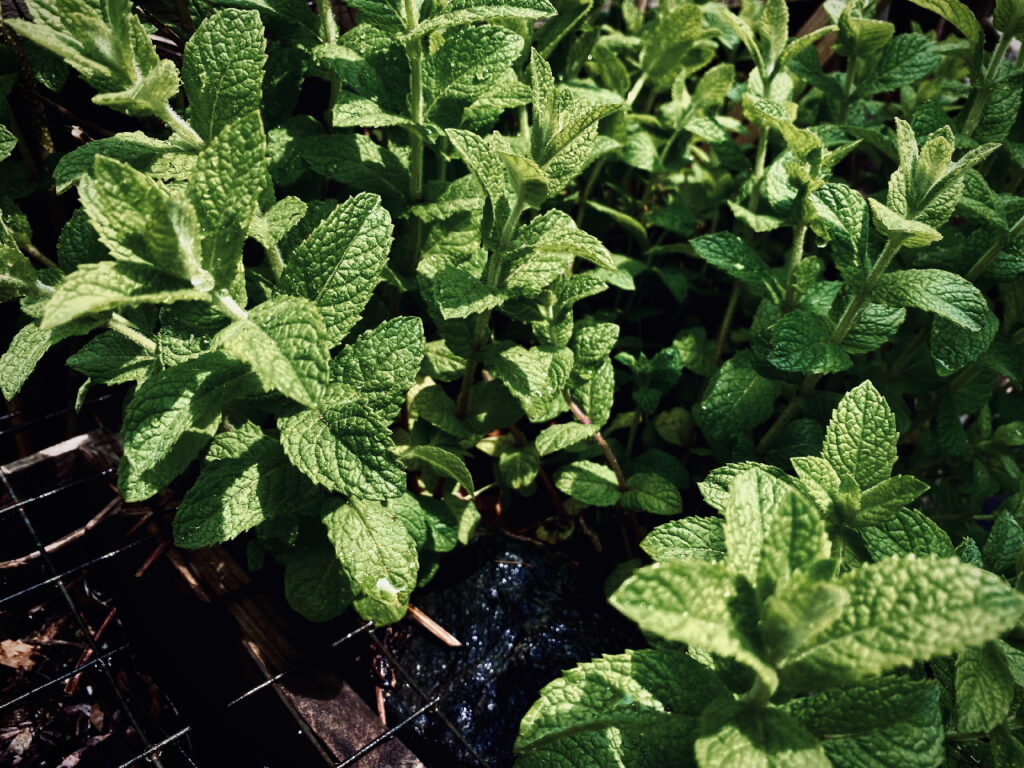How many hours are spent trying to delete the weeds that cover the ground and get in the way of planting + growth each year? How many pests attack countless farming operations?
Mint is known as a way to deter pests. It has many culinary + medicinal uses. Yet it is widely accused of being a pest. (Oh the irony.) The truth is that it isn’t a problem at all. It is enthusiastic – yes. It can come back year after year and be in more places than originally intended. But it is an herb that is supposed to be used. So perhaps we need to look at it differently – and use it with more intention.

Mint + Blackberry Spring Runners 
Mint, Contained. 
Mint can stop the weeds. Easily.
In Spring 2021, the plot we steward already has a strong showing of several types of mint. Staring into the containers where some annual produce was planted last year, we realize it may make sense to trim the mint back just a little…and plant a specific variety of tomato – wild cherry – that seems to do well just about anywhere, and got along with mint pretty well last year. We are looking forward to seeing the results. In other places on the plot we will allow sugar snap peas to grow with the mint, see what happens. That season is short, so orange chard will probably go in after the peas are done (we will get to prove the claim that mint improves the flavor of chard, yummy). There’s more concern about whether the weather cooperates with this year’s sugar snaps – than the mint’s behavior. We will see.
In one of the spaces, we noticed that the mint completely filled it. Since there was nothing else in it at the time (annuals had yet to be replanted), it wasn’t an issue. But what’s interesting is that in other places the mint grew around the edges of the spaces, leaving plenty of room for the annual seedlings. Is it better perhaps to cut a few sprigs of mint here and there, throw them into water for a refreshing drink…or kneel and pull weeds in the spring in hopes of not having an issue later in the growing season? Everyone has their opinions, but doesn’t it seem sort of an obvious choice?
Mint can be a dynamic, multipurpose, in-season ground cover for annuals.
Trimming + using the plant with intention will only add to the enjoyment of watching the crops come in. And – there are varieties that grow to a very small height that might work even better – imagine a carpet of mint instead of a carpet of weeds.
The truth is that even though many of us love to see that beautiful “black gold” soil contrasting with a gorgeous seedling or germinating crop…the ground seems to want to be covered. It doesn’t want to be “naked” – and mulch doesn’t always serve as the best solution (if it isn’t comprised of the right materials + applied correctly). So are perennial + low-growing herbs a solution of the future?

